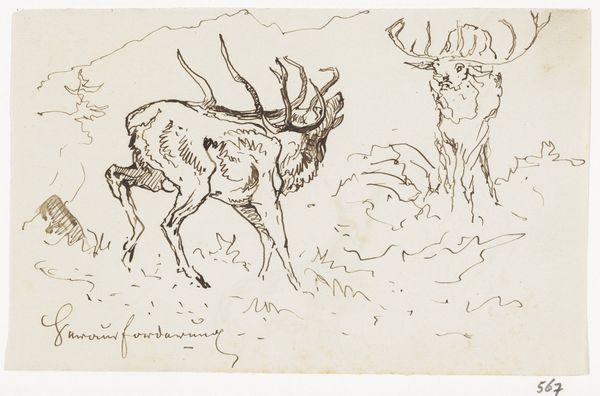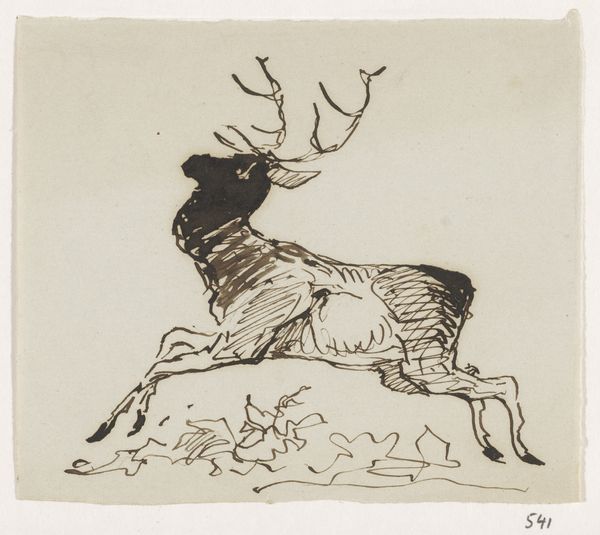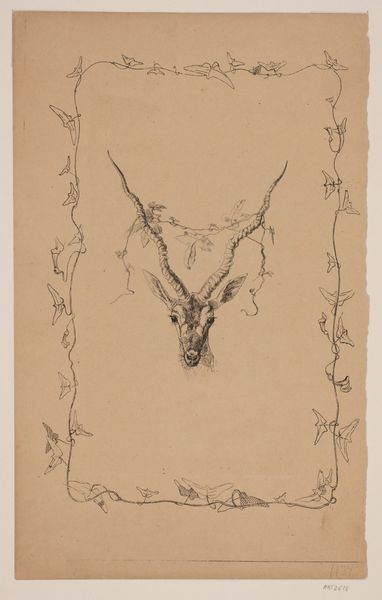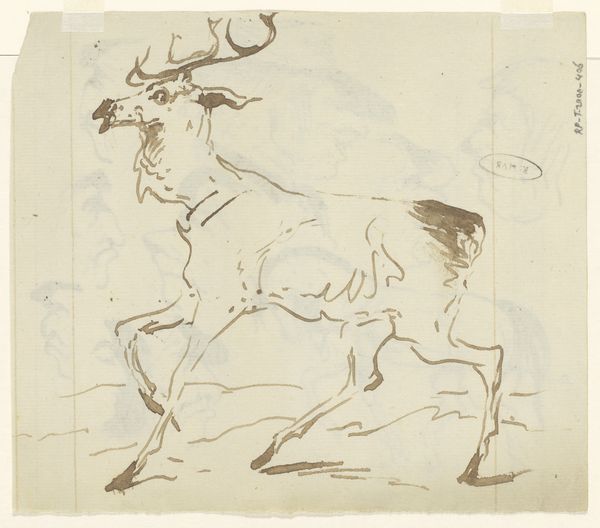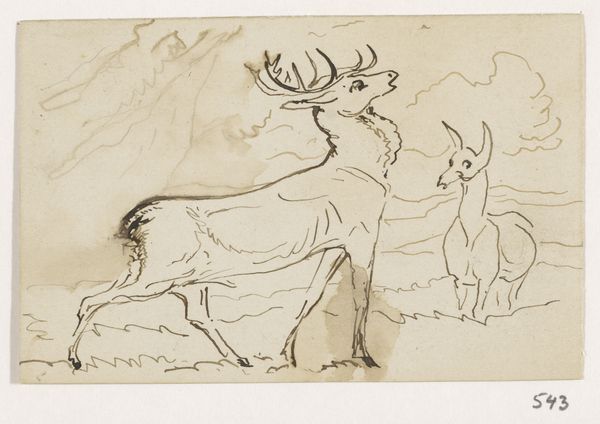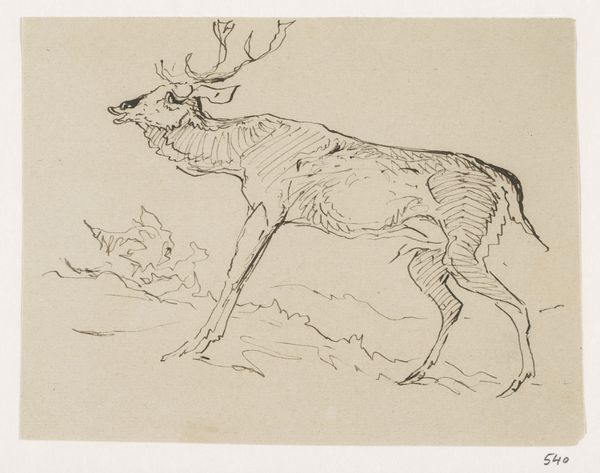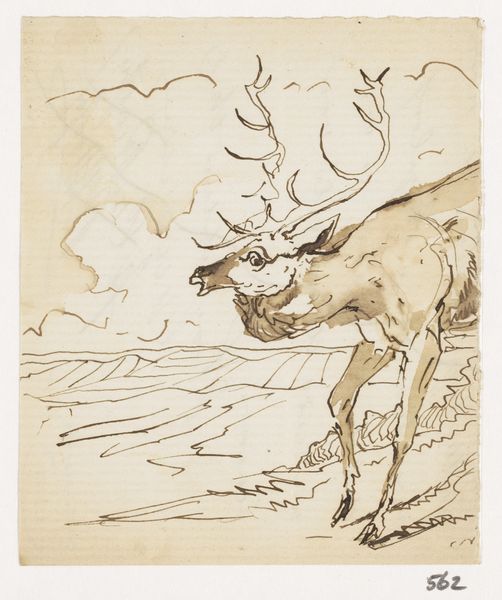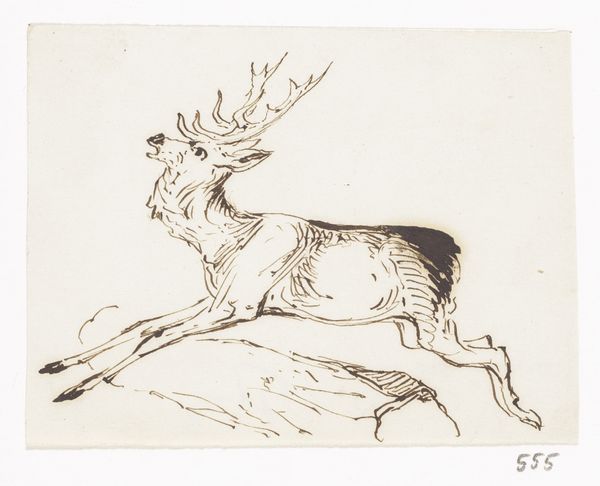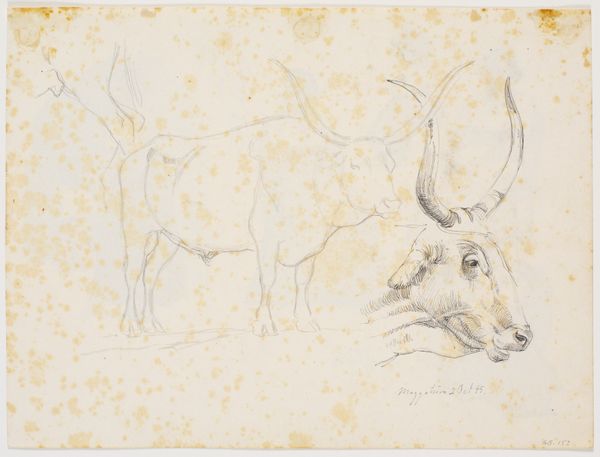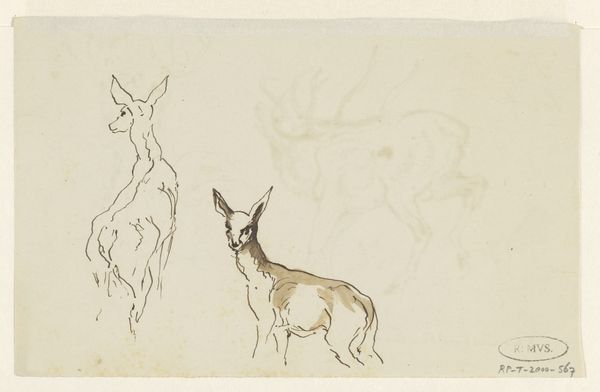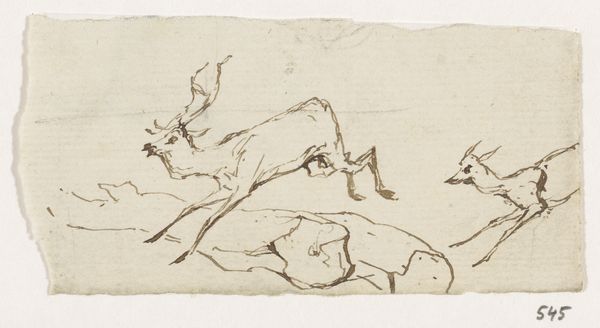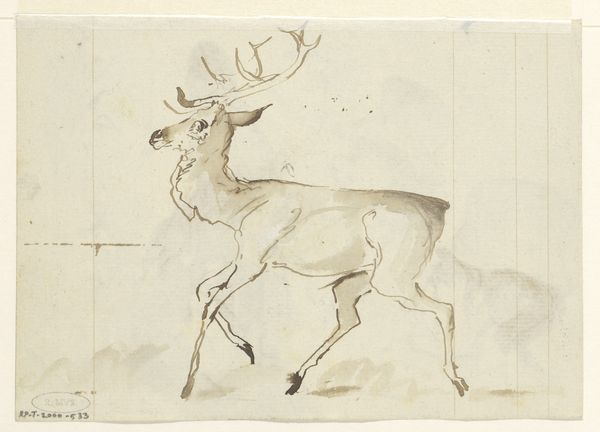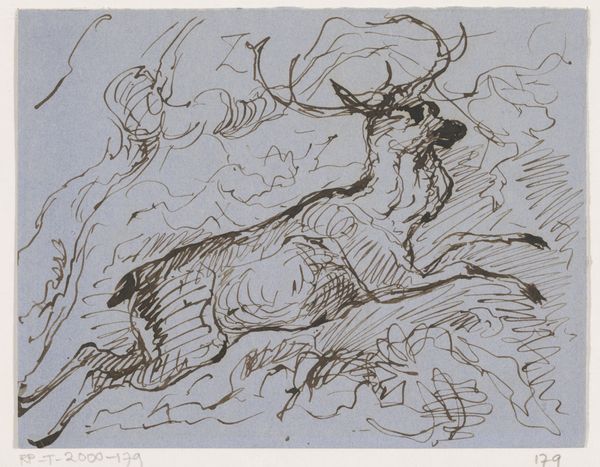
Dimensions: height 169 mm, width 100 mm
Copyright: Rijks Museum: Open Domain
Curator: This drawing, rendered in ink, comes to us from Johannes Tavenraat, and is called "Two Deer." It dates from roughly 1840 to 1870. It’s currently held here at the Rijksmuseum. Editor: It strikes me immediately as rather unfinished, a pen sketch almost. Yet, despite that, it manages to evoke a real sense of presence. Look at the antlers! So prominent. Curator: That's true, it does carry the aura of something preliminary, which speaks to a common function of drawing in the 19th century. These kinds of studies were not necessarily intended as works for public consumption. Editor: Even so, consider how deftly Tavenraat suggests volume with just a few strokes. The way the deer on the left overlaps the other, creating depth despite the economy of line...remarkable! Curator: Absolutely. You know, during the Romantic period, which deeply informed Tavenraat’s aesthetic, the animal and natural worlds became symbolic reservoirs of authenticity, which stands in direct contrast to increasingly industrialised European societies. Editor: Do you feel, then, that these deer, these denizens of the natural world, are posed here as some kind of counterpoint to societal development? Curator: Precisely. These depictions acted almost as allegories of an idealised, pre-industrial existence that European urban centers could never truly obtain. Notice how they seem isolated from their landscape. It throws their iconic presence into sharper relief. Editor: I find that, within its minimal form, a tangible elegance lives. An effortless capturing of wild essence. Almost ghostly in its incomplete appearance, suspended somewhere between artistic vision and something tangibly real. Curator: I would simply say this little piece reveals how artistic exploration helped shape both collective societal beliefs and perceptions of reality for 19th-century viewers. Editor: I see instead the very delicate way it evokes nature with an emphasis on texture over the necessity of accurate detailing, lending this work an emotive impact. The texture alone defines its intent, really, doesn’t it?
Comments
No comments
Be the first to comment and join the conversation on the ultimate creative platform.
